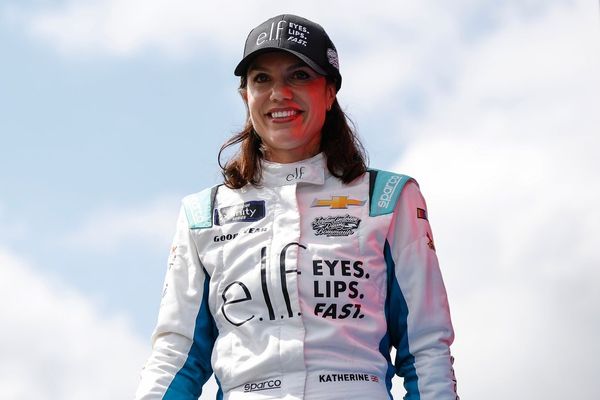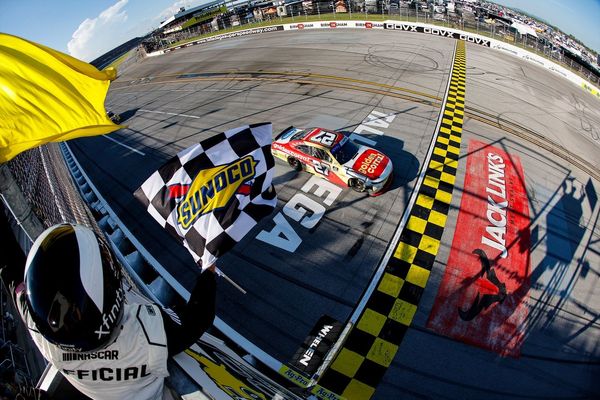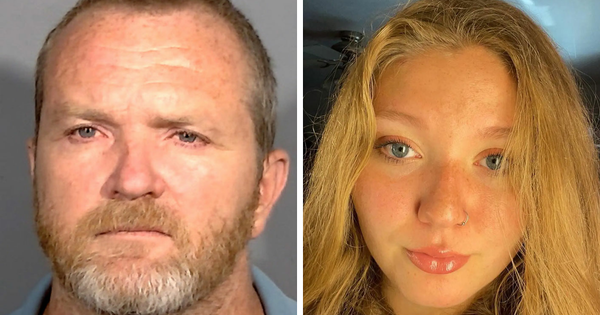
Whether aspiring to be a prominent recording artist, social media star or creative entrepreneur — today’s generation shares a desire for influence.
Yet, the full breadth of influence extends beyond praise, imitation and igniting temporary trends. It is instead measured by the ability to shift paradigms, lead by example and design models of success that didn’t previously exist.
In a digital era driven by content and controlled by cross-disciplinary creators, this revelation makes the role of storytellers more meaningful than ever. The rising tide of disruptors are poised to control their narrative and expand the scope of possibility.
Powered by an instinct to innovate and express their viewpoint across platforms, the new creative class embodies the belief that their outlook can elevate minds, redesign industries and redefine the culture. One versatile creator who has stood at the forefront of this shift is Taj Stansberry.
The 37-years-old director, photographer and entrepreneur has emerged to solidify his position as one of the industry’s most prolific talents. Since making his directorial debut shooting Rihanna’s “Please Don’t Stop The Music”, Stansberry carries over a decade of experience behind the camera, with a resume of standout music videos for stars such as Usher, Ne-Yo, John Legend, G-Eazy, Big Sean, Wale and Mary J. Blige.
In 2011, the Oakland native directed the breakout video for Jennifer Lopez’s anthem “On The Floor”, which grew to amass more than 1.2 billion views and stands as one of the most-watched videos of all-time. Within that same year, Stansberry founded GoTPK, a full-service creative studio specializing in all facets of visual storytelling.
His signature style of photography has also led to an expansive portfolio of images famously seen on billboards, album covers and between the pages of many high-profile magazines. In 2016, Stansberry released his first book entitled Turbulence, sharing a curated collection of original images and reflective commentary capturing the first 10 years of his dynamic career.
In the same year, he transitioned into television by creating and serving as a producer on The Therapist, Viceland’s acclaimed series featuring major artists across genres sitting down with a licensed therapist to candidly unpack their lives. Now, preparing to make his mark in front of the camera as an actor and gearing up to release his first feature film, the renaissance man is ready to share his story with the world
I spoke with Taj about the vision behind his work, evolving as an artist and the importance of pushing yourself to take bigger risks.
Where did the spark to become a visual storyteller derive from and who were the examples you were inspired by coming up?
Taj: My family is made up of artists. My mother was a florist and could literally do anything she put her mind to. I’ve seen her create things out of what most people would consider garbage, turn that into gold and completely repurpose it. Repurposing was my first lesson in art — Learning how to repurpose things and look at everything as a canvas. Instead of seeing a blank space or solely seeing something for exactly what it looks like in the moment, it inspired me to see potential and exercise my own vision and imagination to redefine what it can become. When you’re exposed to lessons like this early, they resonate later on once you develop skill. I developed skill from my brother, who was a designer. He went through the graphic design phase, creating the brand aesthetic for FUBU, Allen Iverson’s Reebok line, Jay-Z’s S. Carter shoes and many others. He would show me the designs all the time growing up. He taught me about process, layers and color. Being a big brother, he also taught me discipline. I wanted to be just like him, so I would get on the computer and watch him to learn. My brother taught me that art and design is about respect — you have to respect the rules and laws that govern it. Every time you use a font, you’re using an idea someone else thought about and refined until it was perfect. Having both my mom and big brother showing me these things at the same time is what really shaped and inspired me to pursue art.
What was the first craft you passionately pursued and what was the turning point in which you knew it would become your professional career?
Taj: I started my career in photography. I was 24-years-old when I first picked up a camera with intent to turn the craft into my profession. Art was always all around me, but it wasn’t until I picked up a camera that things really clicked and everything shifted for me. My friend’s uncle let me borrow a camera for an entire year. I started taking photos of a few of my friends, just trying it out. It was a process of finding my own unique style and approach versus other people’s work. Since I grew up around professionals, I always looked at and studied the best of the best. You know high quality when you see, when you touch it and when you feel it. High quality is a taste level or palate you develop through exposure. These things drove me, because I was determined to be great at something other than what my family did artistically. While capturing photos of my friends, one of them referred me to someone who was managing models and looking to elevate their agency. He offered to pay me $600 to shoot male and female models. When we finished, he ended up paying me $2,400 — and it ended up being for Ford Models. I thought he overpaid me, but he happily gave it to me and told me the shots were perfect. That was a turning point — seeing something that was in my head come to life, be high quality, and get paid well for it. I didn’t get another check like that for a year, but it felt so good that I never had a job other than art again.
You stepped into photography and directing with little experience or formal training — When did you realize you had what it takes to be successful and what was your approach to overcoming the learning curve?
Taj: That moment came when I had an Arriflex 435 camera on my shoulder less than two years after taking my first photo — I was shooting Rihanna’s “Please Don’t Stop The Music” in Europe. That experience began a fast-track in my career. Just 15 months after starting, I woke up in Prague, Czech Republic and couldn’t believe where I was. I was on a plane, flying to Europe, to direct a video for one of the biggest artists in the world. I’m also managing an 80-person crew. I was reflecting on the fact that it all started from borrowing a camera and shooting my friend’s from junior high school. I was also scared, because I didn’t know if I had gone too far with championing myself as a photographer and fooled everybody. I had to remind myself that I didn’t fool these 80 people who showed up to work with me or everyone who believed in my ability. The truth was that I really belonged there and was ultimately fooling myself out of accepting who I really was. In that moment, you have to make a choice — either you’re going to embrace the reality that you’re life is changing or you can refuse to believe, go back to your old life and let somebody else take over. Although I was afraid, I’ve always been good at locking into the work and going for it. That type of confidence shows up in your voice, attitude and how you take control of the situation. The video ended up winning a few awards and that started my run.
When confrotned with that defining moment of stepping up or turning back, so many talented creators fold under the pressure — What gave you the confidence to face your fears and embrace the challenge?
Taj: It’s easy to forget that these life-changing opportunities don’t just happen — the preparation begins from the first moment you dedicate to your craft. The preparation to shoot my first major music video started the first time I decided to pick up a camera. Going further than that, I was being prepared to pick up the camera from watching my family as a child. You have to see the full scope of the picture to appreciate the moment you’re currently in and stepping into. When I realized everything prepared me for the opportunity in Europe, I decided to embrace it all. I made decisions, took risks, experimented with things, and most importantly trusted myself throughout the entire process. That made the difference, because it showed me that I actually knew more than I thought, and even more than the people who hired me for the job. That’s what they saw in me and why they invested in me. They didn’t know anything about my backstory or training to that point. You have to own your story, see the value within it and remind yourself of who you are. Nobody will understand your power more than you will. At the same time, you have to decide to own it or give that power away.
What was the set of lessons or revelations that experience taught you that have fueled your career to this point?
Taj: The lesson I learned is not to give yourself a choice; you can’t give yourself a choice. When I say it’s a choice you have to make, I’m saying it’s not up for debate, you have to own it. When I was shooting in Europe, my brother came to visit and stayed with me. Before we went to sleep, I turned of the lights and told him ‘I’m going to kill it tomorrow!’ That was really me trying to make him feel good about what I was about to do, but more so convince myself with words that didn’t really have anything behind them. But, it’s what he said that gave me the confidence to push through. He simply said ‘you don’t have a choice, so go to sleep.’ That always stuck with me. He came there because he knew I was going to win, he didn’t fly all the way out there because there’s a chance I would fail. He said ‘you’re not a gamble.’ That was the best thing he could’ve ever said to me. When you believe in something, that doesn’t mean you know it’s going to happen exactly how you want it to. You can believe that something will happen, but you have to be the one to make it happen. When you operate like you don’t have a choice all of the variables that result are positive. You start to attract an infinite amount of possibilities.
How did your vision evolve as an artist and at what do you believe is the role of a creative in society today?
Taj: After gaining more experience and working across different mediums, I realized that everything is simply a canvas. It’s the same lesson I was taught as a kid, but it resonates later when it applies to something that I’m physically doing. My mom pulled over on the freeway and told me to go grab a hubcap and throw it in the back of the van. An hour later, she tells me to come into her flower shop; she turned our garage into a flower shop. When I went down there, she gave me this flower pot and told me to put it back in the car. I noticed something about it looked different, so I looked at the base of it — she had spray painted the hubcap gold and repurposed it. I was embarrassed and inspired. Embarrassed because I saw it as trash on the side of the road, but inspired because she was able to see it as this beautiful piece of art. That showed me you also can be inspired by things you never want to feel again. I’ve evolved to understand the deeper meaning of details and seeing the beauty in the nuances of things. As an artist, you’re contributing to the world and creating things that exist forever, so you have to be honest. When you see everything as a canvas, it’s no longer about films, photography, painting, designing, performing — it’s all just art. When you develop yourself as an artist, you can literally do anything. Saying that you’re a photographer is just saying what you’re going to do for someone. You can know that, but to embrace that means to step out fearlessly and be unafraid to figure it out. Artis communication. Art translating life creatively through different mediums, so your job as an artist is to add your experiences, emotions and perspective into your toolbox and go create.
We’re in an era where creators are embracing ownership and encouraged to control their ideas — How important is collaboration and what keeps creators from building more collectively?
Taj: People don’t like to collaborate out of fear or being insecure about not receiving all of the credit. In relation to art, that’s just not real. Everything in art is a collaboration. Before collaborating with another artist, the first collaborator you have is God. It’s never just you. When you can relieve yourself of insecurity and eliminate the ego, it allows you to broaden your canvas. Ego is the killer of the best photographers, the best directors, and the best graphic designers. Ego is the biggest killer of the artist. Our responsibility is not to be celebrities or win every award, our responsibility as artists is to spark dialogue and challenge the way people think. Being an artist is about being No. 2, you can’t be No. 1. Being number one means that you’re putting yourself before the art. You’re actually No. 3 — the people come first, art comes second, and you come third.
Describe your vision behind launching G0TPK and what was your strategic thinking behind it?
Taj: I wanted to develop a diverse team of people with different perspectives and skill sets that have tremendous potential to shape the future of this industry. I noticed how everything was changing over time — from the equipment, staffing and budgets to speed, approach and style of storytelling. Although these technical dynamics were changing, it never shifted the principles of what art is about. So, I went and found people that were extremely young, driven and had a ton of potential. I believe you don’t really start embracing your truth fearlessly as a human or artist until you’re 25 or 26. I recruited people who were 19, and felt that I could share insight and wisdom that could help accelerate that process. GoTPK is about leading creators with truth and giving them a spark to take action an see the world as their canvas. You’re going to get one-on-one training from me and be brought into these different opportunities to learn and grow. The advantage of building a young team with diverse talents is bringing in clientele and taking on projects around their individuals talents. It’s like starting an agency that reflects a network of creators extending beyond photographers and directors. It started out as just TPK, then I put the “Go” in front of it to inject energy and power into it. That’s like the engine that drives everything we do as disruptors.







